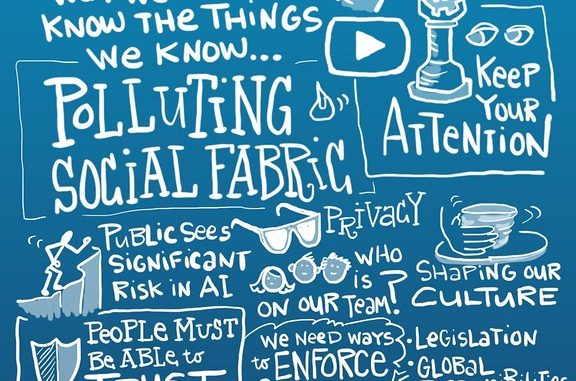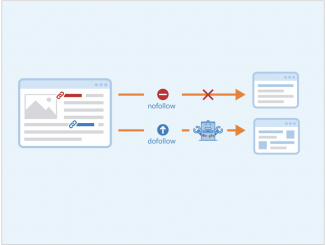
QUESTION 3
Role of the Internet in Shaping the Structural Gender Inequalities
There are many factors that have influenced the development of the Internet, but it can be argued that one key factor has been structural inequalities. Structural inequalities are differences in power between groups in society, with specific institutions favoring some groups over others. With the exponential growth of technology and societies shifting to more technologically-based modes of living, it is becoming increasingly evident how this inequality plays itself out through various institutions like education and economic systems.
Kristen E. Wagner (2017) argues that there are two key factors in the creation of the Internet that have led to structural inequalities. The first is the development of computer technologies, which plays a large role in structuring inequality through economic systems, thus creating social hierarchies. The second factor is social constructions of race, gender, sexuality and ability, which affect people differently depending on their position within these constructs.The scope of this paper will take a look at how the rise of the Internet has impacted gender ideologies.
The Internet has become an important part of our culture; however, many myths about the Internet persist. For example, it is often assumed that women dominate the field of technology (Wilensky, 2008). It is often assumed that they do because of gender stereotypes. Although these assumptions are reasonable given that women dominate in fields such as computer science and engineering, they may be masking other facts about online communications.
The Internet as a communication tool was originally developed by academics and research institutions such as universities and governments. However, the Internet has evolved into a commercial entity. It is now sold to private companies which then sell access to consumers. As it has become commercial, its origins have been forgotten; therefore, many myths exist (Wilensky, 2008). The Internet has also changed the way we communicate with each other. First, it has increased our ability to communicate with people around the world. Second, it has decreased the amount of time required for communication; people can now seek each other’s attention more quickly. Finally, it has decreased the cost of communication; not only is the Internet far less expensive than phone calls or regular mail, but new technologies such as instant messaging are practically free.
A woman who develops a new technology is often credited with making it more effective. For example, the first commercially marketed computer was invented by a woman. This credit has been given to women because of gender stereotypes (Harvey, 2006). Women are credited for innovations such as the birth control pill because of gender stereotypes. This has created an image of women being maternal, while men are seen as ceaselessly productive. Therefore, the birth control pill, which provides protection against pregnancy, is credited to a woman because she was seen as being more concerned with the well-being of her family than men are.
Although there are many beliefs about the Internet that seem reasonable, they mask other information that seems relevant. For example, it is often assumed that women are more likely to have access to technology than men are. However, this assumption does not consider other factors such as wealth or education level. Moreover, the “women-in-tech” myth has been debunked by studies showing that women are not more likely to have access to online technologies (Wilensky, 2008). Although women are not more likely to have access to technology, their access is not as limited as it once was.
Although women are not more likely to have access to technology, some groups of women are still denied technology simply because of their gender. There is often a perception that the Internet is dominated by men. This view of the Internet has been reinforced by studies of online communications; however, this study of online communications did not address why this might be so (Harvey, 2006). The implications for this assumption are that women are more likely to use the Internet than men are. Because they are more likely to use it, they might be more likely to think about their ideas on the Internet than men do.
The Internet is not dominated by men; however, it is structured in a way that limits women’s opportunities to use it. One way that the Internet limits women’s opportunities is by limiting their access to technology. The people who develop technology are men, and they make decisions about what technology should be developed (Wilensky, 2008). Therefore, researchers assume that men are more likely to work on technology than they are. Although this may be true in some cases, it is not true in all cases (Wilensky, 2008).
Additionally, the Internet’s structure limits women’s opportunities to use the Internet by limiting access to information. For example, women tend to receive less attention when they try to get online. This may be because there are so many men online that making their presence known is not important for them (Wilensky, 2008). Although social media platforms can be utilized to increase social capital, ladies who desire to preserve a private sphere may find it challenging to do so. Males dominate these sites, with women utilizing them less because they are not considered an appropriate means of communication (Castells et al., 2010). Females may be harassed online as a result of this, which has become more prevalent with the growth of social media.
Women are not as likely as men to even participate in online communications because of this treatment from men since they are more likely to be harassed than men are (Harvey, 2006). According to Waddell (2002), the Internet is “one of the most popular meeting places for gamers”. The Internet has enabled people to communicate anonymously which means that they are able to say things they would not otherwise have said had their identities been known. Because women are more likely to care for children than men are, they are more likely to be home during the day when other people do online communications (Castells et al., 2010).
Men tend to use the Internet more than women do; therefore, they lead most of the conversations that take place on the Internet (Harvey, 2006). Implying that men tend to ask most of the questions and provide most of the answers driving women away from online conversations. One survey found that more than half of the users who have logged on to any Internet site have experienced some form of harassment both in chat rooms and in discussion forums (Jackson, 2005). The study found that men are more likely to be harassed offline than women are. Women are more likely to be harassed online (Jackson, 2005).
The Internet is a uniquely unrepresentative technology for one very important reason: most of its users are, by and large, overwhelmingly male. The online world is often framed as a meritocracy where anyone with enough skill can go from nobody to somebody in an instant if they work hard enough, but this doesn’t tell the whole story; the fact that women make up such a small percentage of website founders and programmers means that their skills and ideas will be underrepresented online. This is especially true when we look at women’s work in the wider world, where barriers to equal participation, such as unconscious bias and the glass ceiling, are much more obvious. It is easy to talk about how the Internet has transformed our lives and brought progress in so many ways. But we need to be critical of how our technology affects us and what we do with it. Different groups of people have different experiences and will be marginalized or advantaged in different ways.
Reference
Castells, M., Fernandez-Ardevol, M., & Malinowski, J. (2010). “The network society: A cross-cultural perspective (Vol. 1 & 2)”. International Journal of Management Reviews: 12(1), 71-84; 12(1), 33-64. Retrieved October 10, 2021, from http://www.iscsm.org/ICMS%20Journal%20Vol%2012%20167.pdf
Castells, M., Fernandez-Ardevol, M., Qiu, L., Sey, A., & Zhao Wei (2010). “The Internet and the public sphere: global debates”. Information Polity, 15 (4) pp 231-248 DOI: 10.3233/IP-2010-0692. Retrieved October 10, 2021, from http://www.informaworld.com/10.1080/13691181003639174
Harvey, A. (2006). “Internet as a mediator of sociability: How everyday social relationships are being mediated by websites”. New Media & Society, 8(4), 593-608. DOI:10.1177/146144480600800310 Retrieved October 10, 2021, from http://www.informaworld.com/10.1177/146144480600800310
Jackson, C. (2005). “The effect of an anonymous posting system on the acceptance of new ideas: Evidence from Google Groups”. The Journal of Applied Communication Research, 29(1), 33-47. Retrieved October 11, 2021, from http://onlinelibrary.wiley.com/doi/10.1080/00909880500094589/abstract
Waddell, S., & Martin, G. (2002). “Playing computer games: Motives, experiences and relationships with alcohol use”. International Journal of Mental Health Addiction, 1(1), 37-46. Retrieved October 11, 2021, from https://www.researchgate.net/paper/Playing_computer_games_motives_experiences_and_relationships_with_Alcoho/30627cd5f46c0e2cc1b04a482
Wagner, K. A. (2017). “With age comes wisdom”. Feminist Media Histories, 3(2), 141-165. DOI: 10.1177/2151355917726258 Retrieved October 10, 2021, from http://www.genderandsociety.org.uk/articles/2017-03-01-wisdom-age/#sthash.YFt1Y6qr.dpuf
<a rel=”license” href=”http://creativecommons.org/licenses/by/4.0/”><img alt=”知识共享许可协议” style=”border-width:0″ src=”https://i.creativecommons.org/l/by/4.0/88×31.png” /></a><br />本作品采用<a rel=”license” href=”http://creativecommons.org/licenses/by/4.0/”>知识共享署名 4.0 国际许可协议</a>进行许可。
Role of the Internet in Shaping the Structural Gender Inequalities


